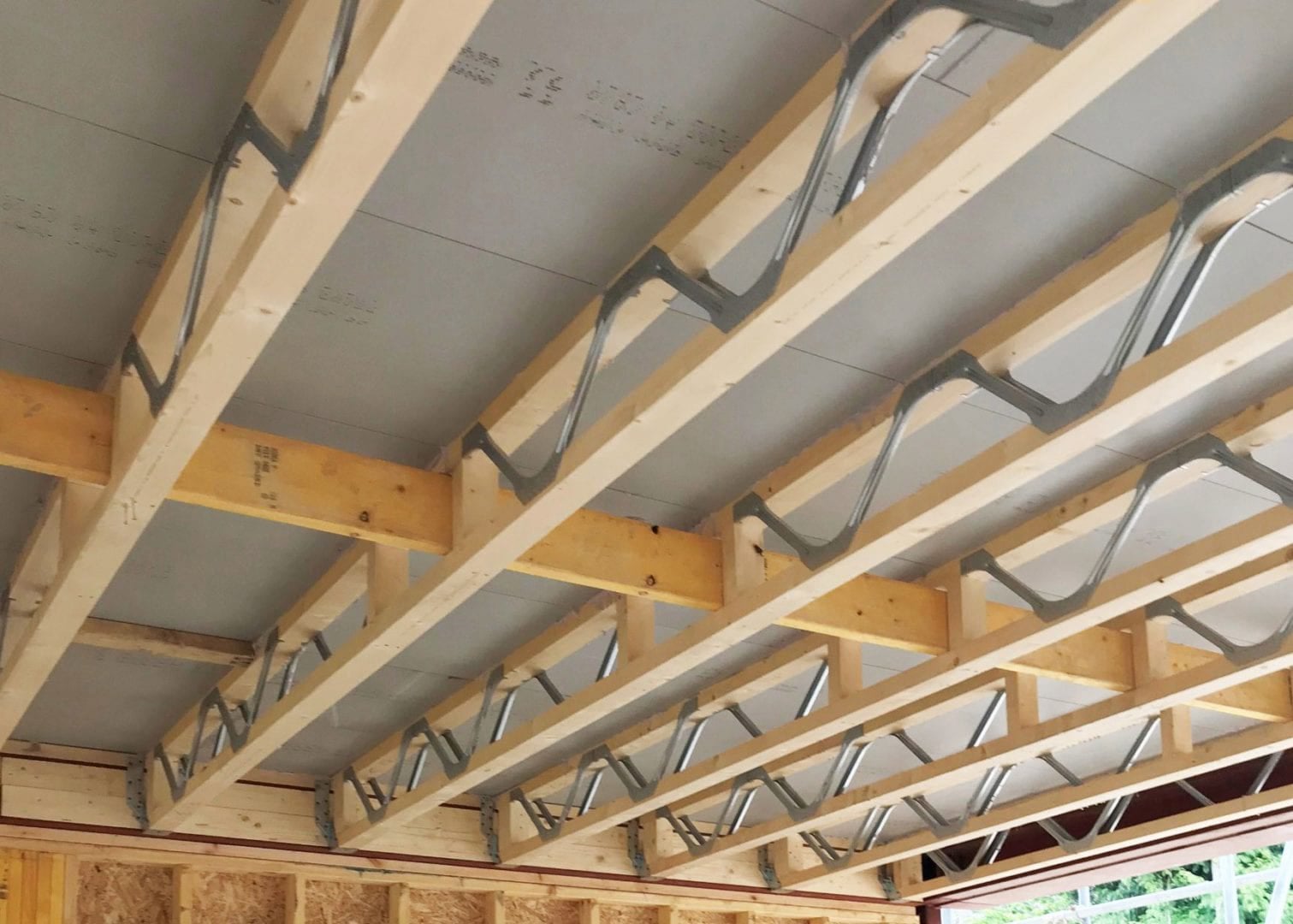Laminated veneer lumber, or LVL, is an engineered wood product that consists of thin layers of wood veneer bonded together with adhesives. This process creates a highly uniform and strong material that can be used in a variety of applications, from beams to headers. When incorporated into wood I-joists, LVL provides significant benefits that have made it the material of preference for many builders.
Understanding Wood I-Joists
Before diving into the benefits of LVL, it's important to understand what wood I-joists are. A wood I-joist is a structural element used primarily in the construction of floors and roofs. It is named for its I-shape, which is made up of a top and bottom flange (typically made from solid wood or engineered wood) and a central web (usually made of plywood or oriented strand board). The I-joist is designed to provide excellent strength while minimizing weight, which makes it an ideal choice for large-scale building projects.
However, the strength of a wood I-joist isn't just about the materials used; it's also about how those materials are engineered to work together. This is where laminated veneer lumber (LVL) comes into play.
The Role of LVL in Wood I-Joists
Laminated veneer lumber (LVL) is increasingly being used as the flange material in wood I-joists. The primary reason for this shift is that LVL offers superior strength, consistency, and durability compared to traditional solid sawn lumber. By laminating multiple layers of veneer, manufacturers create a product that has fewer defects like knots or grain irregularities that can weaken the material. This makes LVL an ideal choice for wood I-joists, as it provides a stable and reliable flange that can support heavier loads.
Why Builders Prefer Laminated Veneer Lumber for Wood I-Joists
Increased Strength and Durability
One of the key reasons builders prefer LVL for wood I-joists is the enhanced strength it provides. LVL is engineered to have a uniform density, which results in a product that is stronger than traditional solid wood. It can withstand greater loads without bending or breaking, making it especially suitable for use in large buildings where high-strength materials are required. Additionally, LVL is resistant to warping, twisting, and shrinking, which are common issues with solid sawn lumber. This durability makes wood I-joists with LVL flanges a reliable choice for both residential and commercial construction projects.
Lightweight and Easy to Handle
Another advantage of laminated veneer lumber is its light weight. LVL is much lighter than solid wood, which makes it easier to handle during installation. Builders appreciate this feature because it reduces the physical strain on workers and speeds up the overall construction process. The reduced weight also means that transportation costs are lower, as more material can be shipped at once. This efficiency makes LVL an attractive option for builders who are looking to reduce the time and cost associated with transporting and handling materials.
Cost-Effectiveness
While LVL may have a slightly higher upfront cost compared to solid sawn lumber, the benefits it offers in terms of performance and durability make it a cost-effective choice in the long run. Because it is less likely to warp, twist, or shrink, it reduces the need for repairs and replacements down the line. Additionally, the ease of handling and faster installation times can lead to lower labor costs. When all factors are considered, LVL proves to be a wise investment for builders who want to ensure the structural integrity of their wood I-joists while keeping overall project costs manageable.
Design Flexibility
Laminated veneer lumber also offers builders greater design flexibility. Unlike solid wood, LVL can be manufactured to precise dimensions and specifications, allowing for more customization in building designs. Builders can select the ideal size and strength of LVL for specific applications, ensuring that the wood I-joists meet the required load-bearing capacity without excess material. This level of customization allows for more efficient use of resources and can contribute to a more sustainable building project.
Environmental Benefits
In addition to its strength and cost-effectiveness, LVL is also considered a more sustainable option than traditional solid wood. Since LVL is made from smaller veneers, it can be sourced from fast-growing trees, reducing the pressure on older, slow-growing species. Additionally, the manufacturing process for LVL is more efficient in terms of utilizing the full potential of the wood. This makes laminated veneer lumber a more eco-friendly choice for builders who are looking to reduce their environmental impact.
Consistency and Quality Control
One of the standout features of laminated veneer lumber is its consistency. Because LVL is engineered in a controlled environment, it is less prone to the defects commonly found in natural wood, such as knots or splits. This results in a more reliable and predictable material for building projects. Builders can rely on LVL for wood I-joists to deliver uniform performance across the entire structure, which is crucial for ensuring the long-term stability and safety of the building.
The integration of laminated veneer lumber into wood I-joists has revolutionized the construction industry by providing a stronger, more reliable, and cost-effective material for structural applications. LVL's superior strength, durability, and consistency make it an ideal choice for wood I-joists, helping builders create safer, more efficient buildings. With its lightweight nature, cost-effectiveness, and environmental benefits, it's no surprise that LVL is the material of choice for many modern builders looking to maximize both performance and value in their projects. As the demand for high-quality, sustainable building materials continues to grow, the popularity of laminated veneer lumber in wood I-joists will likely keep rising, further cementing its place in the future of construction.
